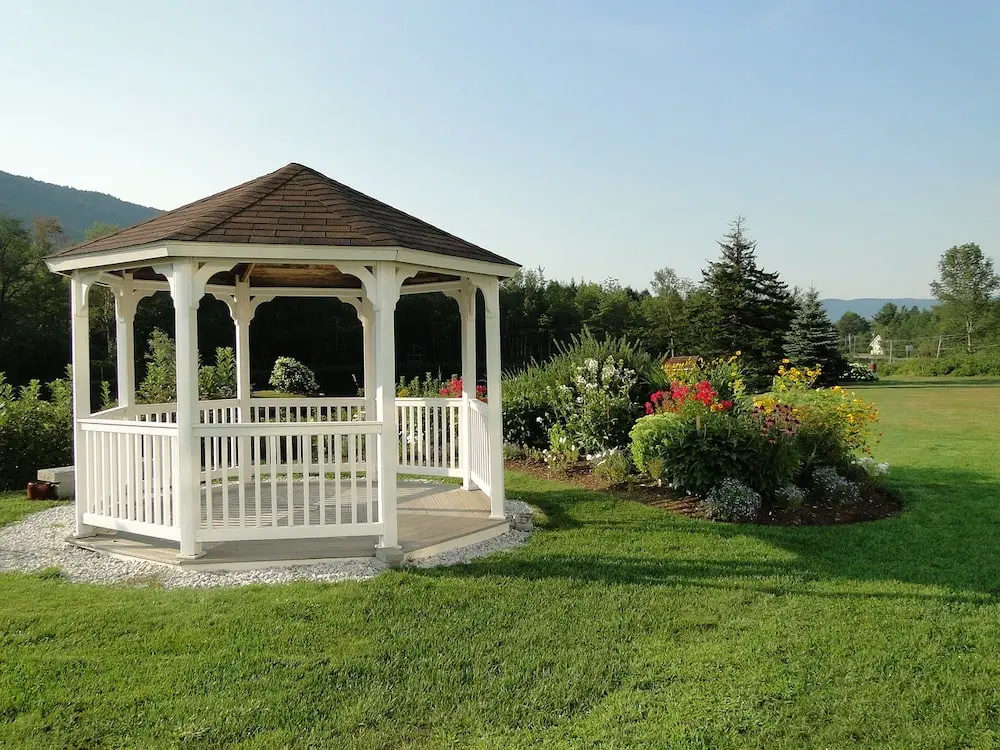- Other structures coverage covers detached structures like a shed or guest house
- Other structures coverage has significantly lower limits than Section A dwelling coverage
- What perils are covered under section B differ in various forms of homeowners insurance
What is other structures coverage B?
Other structures is the second section of a homeowners insurance policy. It is the section of the policy that protects a homeowner from damage that happens to structures on the property that are not attached to the house itself. Where the first section of the policy, dwelling coverage is meant to protect the homeowner from any damage that occurs to the home itself or anything attached to the home, other structures coverage encapsulates all the other physical structures on the property. Structures that are typically included under this section of coverage in a policy include:
- Detached garages
- Detached guest houses
- Detached gazebos, patios, or decks
- Fences
- Mailboxes
- Sheds
- In-ground swimming pools*
- Driveways
- Pool houses
- Barns
- Docks
- Piers
- Greenhouses
- Boathouses
It is important to note that some in-ground pools may be considered to be attached to the home and therefore covered under the dwelling coverage section. Above-ground pools are generally protected under personal property (section C) coverage. It is encouraged to check with your insurance agent to determine what section of coverage your pool is covered under because the coverage limits vary depending on the section. It may make sense to purchase additional coverage for a swimming pool that is covered under the other structures or personal property sections of coverage to increase the protection limit.

What is the maximum coverage limit of other structures coverage B?
Each section of coverage in a home insurance policy has its own maximum limit of coverage that is placed on it by the insurer. This means that the insurer will only reimburse the homeowner for damage repairs up to that maximum amount stated in the policy. Under a standard homeowners insurance policy, the maximum protection amount is typically 10% of the maximum limit for dwelling coverage A. For example, if the maximum amount of dwelling coverage in a policy is $300,000, then the maximum amount of other structures coverage in the policy would be $30,000. The maximum limit for other structures coverage might possibly differ from policy to policy and insurer to insurer, but in the overwhelming majority of cases, it is 10% of the dwelling coverage limit.
It may be possible to get a higher limit for other structures coverage. Your insurer may allow you to increase your other structures coverage to 20 or 30%. Just keep in mind that these additional protections come with an additional premium cost. If you have multiple high-value structures that are detached from the property, it may make sense to get additional coverage for those other structures.

What perils are covered under other structures coverage?
The perils that are covered under the other structures section are the same as those under the dwelling section. In the standard homeowners insurance policy, HO-3, perils covered in the policy are on an open perils basis. This means that all perils are covered under the policy unless explicitly excluded from the policy. This gives the homeowner generally broad-ranging protection for a plethora of perils. Perils that are usually included under a standard policy include:
- Fire/lightning
- Wind/hail
- Weight of ice, snow, or sleet
- Sudden and accidental water damage
- Vandalism/theft
- Falling objects
- Explosions
- Damage caused by an aircraft or vehicle that is not the homeowners
- Volcanic eruptions
This list extends beyond the above listed, but those are the most common types of perils that occur that are covered.
While most policies are the standard HO-3 form of homeowners insurance, there are other forms of home insurance policies that are utilized. These other forms may have more or less encompassing coverage than an HO-3 policy. Forms such as HO-1 and HO-2 have covered perils in the policy for dwelling and other structures coverage on a named perils basis. This form is less encompassing in the perils that are covered as all perils that are not specifically included in the policy will not be covered. Check to see ensure you know what perils are covered and not covered within your insurance policy.
What perils are not covered in other structures coverage?
There are a number of common perils that are usually explicitly excluded in a standard home insurance policy. What’s not covered is the same as what is covered in terms of both the dwelling and other structures sections of coverage having the same inclusions or exclusions.
The perils that are typically excluded are:
- Flooding
- Earthquakes/ground movement
- Infestations
- Mold
- Water damage over time
- Normal wear and tear
- Intentional damage
- Neglect
This list is not exhaustive and can differ from policy to policy and company to company. The inclusions and exclusions may even differ from location to location. Check to see what you are protected against in your policy.
Structures used for business & short-term rentals are not covered
The actual land where the property is located is not something that will be taken care of under Coverage B. Section B also won’t cover any structures that you are renting out for tenants, e.g. a guesthouse may not be protected if you’re using it as an Airbnb.
Any structures on your property that you may be used for any type of business purposes won’t be reimbursable for Coverage B. If you are using your barn for the purpose of commercial farming that is not covered under your homeowners insurance policy. This would be something that would require you to purchase special insurance in order to have coverage.

Are there additional other structures coverages available?
There are a few options for a homeowner to be able to increase the maximum amount of coverage afforded to them under section B of their home insurance policy. Additional coverage may be as simple as upping the percentage of the dwelling coverage limit that is protected in other structures coverage from 10% to 20% or higher. If there are high-value other structures on the property, this may be a really good option for the homeowner.
Replacement cost endorsement
Another option available to homeowners is a replacement cost endorsement. There are two types of limits that insurers use to determine maximum reimbursement amounts: actual cash value and replacement cost.
Actual cash value limits typically provide lower reimbursement amounts to a homeowner than a replacement cost limit, for the same amount of damage. This is due to the actual cash value limit taking into account the depreciation of the structure over time. Each type of other structure will have its own depreciation table that is set by the IRS to determine the calculation of the structure’s value each year.
The replacement cost limit generally provides a higher replacement cost amount because it does not take into account depreciation in the value of the structure over time. Adding a replacement cost endorsement to a home insurance policy will take away the depreciation that is factored into the reimbursement amount awarded under an actual cash value limit policy. In turn, this provides a higher coverage limit for the homeowner for their other structures section of coverage. A good example of when a replacement cost endorsement may make sense to purchase is when the homeowner owns an older home. The cost of the endorsement will differ among insurers, the location of the property and the condition of the property itself.
If you have valuable detached structures on your property such as a detached garage or a guest house, it is recommended to increase the coverage B limits to be sufficient to cover the replacement cost of those structures. Endorsements or riders can be purchased to protect any type of valuables that may be kept within the structures.
Other additional coverages
There may be other additional coverage options available to a homeowner in various cases. There are coverages such as home business coverage that may be purchased if the homeowner runs a business out of a shed or other structure on their home. If the homeowner has a pool, there may be a separate policy available to protect the pool at a higher amount. If the home is in an earthquake or flood-prone area, separate policies can be purchased for each of these perils to make them perils that would be covered if damage to a homeowner’s other structures occurs is caused by them.
Summary
Other structures coverage is generally the same from policy to policy, but each homeowner’s situation is different. This section of coverage is important to ensuring the protection of one’s property. The more one knows about their coverage, the better prepared they can be for anything that may come their way.

